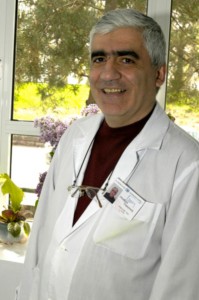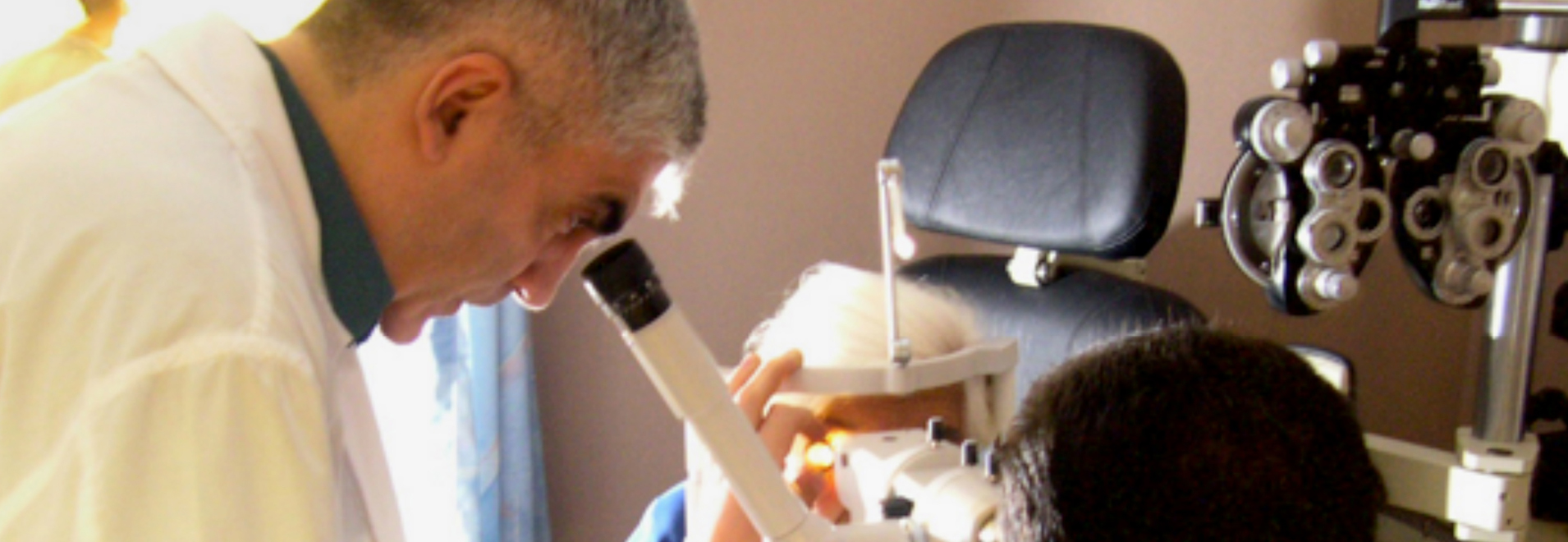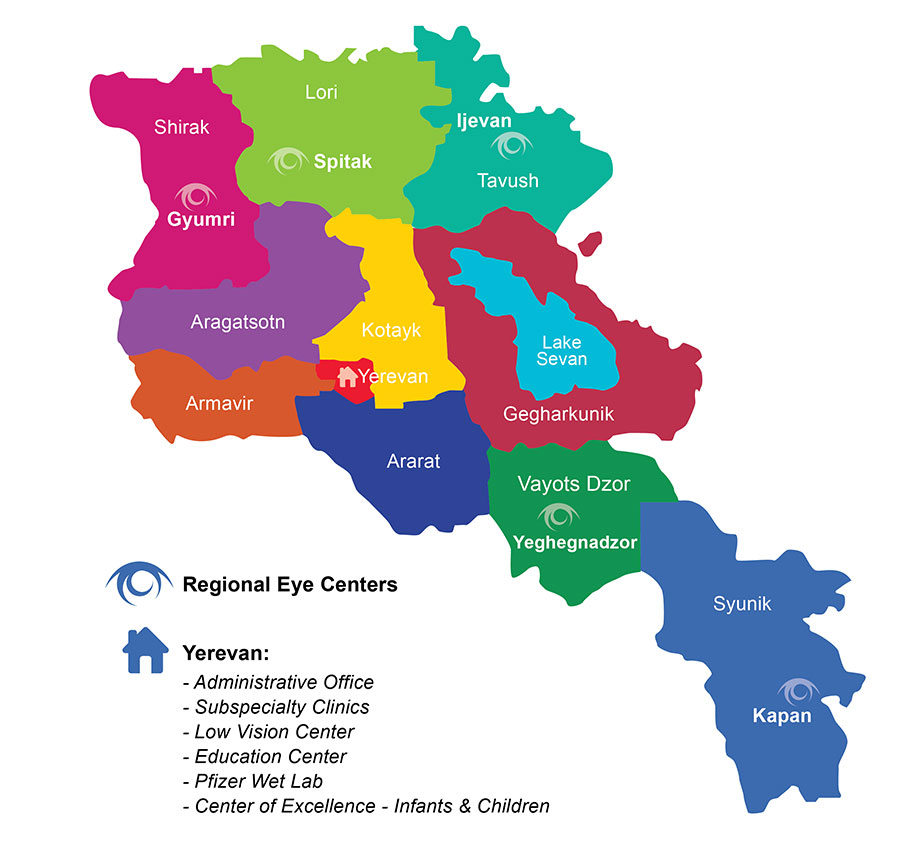PERFORMED FIRST LASER PROCEDURE IN ARMENIA

A career with no shortage of accomplishments and firsts, in 1986 Spartak Ohanyan was given the opportunity to set up a laser clinic at the Republican Eye Hospital (now the Malayan Ophthalmological Center) in Yerevan. “I can say that I actually founded laser treatment in Armenia,” Ohanyan says.
Dr. Ohanyan, who’s now the Head of Laser Treatment Methods at the Malayan Ophthalmological Center (MOC), should have known better than to think about deviating from the family line of genes. “Originally, I wanted to be a diplomat,” he says. “…but my grandmother talked me into medicine.”
Ohanyan’s grandmother — a famous neuropathologist throughout the former USSR — headed the Neurology Department of the Republican Hospital in Yerevan for more than 40 years. Often called away from home to consult on very difficult cases, she was in great demand throughout the region. Even if unable to evaluate a patient in person, when presented with the case, his grandmother gave a diagnosis that was proven right in 90 percent of the cases, recalls her grandson. Remembering his grandmother fondly — a strong woman, the backbone of their family — Ohanyan reflects, “No matter how strong a man is the true family keeper is the woman.”
Dr. Ohanyan began training for his career as a surgeon after graduating from Yerevan State Medical University. Thinking about his early years as a doctor, he says he doesn’t recall when he decided to change his focus to ophthalmology: “All I remember was that having seen the eye fundus for the first time, I abruptly changed my mind and decided to become an eye doctor.”
In addition to starting the first laser clinic in Armenia, Dr. Ohanyan also participated in the first AECP Mobile Eye Hospital (MEH) mission to Ashtarak in 2003.
Recalling that first mission, he says, “There was a big fuss with patients, local doctors, American doctors, and the media all there to see for the first time the ‘hospital on wheels.’”
Given the honor of performing the first laser surgery onboard the MEH, Dr. Ohanyan remembers the case well — glaucoma, trabeculoplastics — and the feeling he had when performing the procedure has remained with him as “one of the strongest impressions of my professional life.”
The future of Armenia’s public health lies in family medicine, Dr. Ohanyan believes. He sees the EyeCare Project playing a crucial role in capacity building as the organization rolls out its program to train 800 family physicians throughout Armenia. He explains, “It’s important to use the good things that were in the old system — the mass screening for diseases — and to build new approaches based on that.” In this context, Ohanyan recognizes the importance of the EyeCare Project’s screening program in social institutions and throughout rural Armenia. He views the AECP/MOC partnership as “invaluable” in terms of building a “national school of modern ophthalmology.”
While still in medical school, Dr. Ohanyan married his classmate, Ruzan, in 1976. Just a year later their daughter, Victoria, was born and son, Hamlet, came five years after that. To support their new family, Spartak and Ruzan worked as nurses while attending school. Spartak says he doesn’t regret marrying young: “I believe it was Sir Walter Scott who said that no one has suffered from waking up early or an early marriage. And this is true in my case. Our marriage is a happy one.”
The advantage of being a young parent, Dr. Ohanyan says, is that there is no discernable generation gap. He and Ruzan were “rather liberal,” trying not to impose their opinions on their children and respecting their choices. He tried “to be useful to the children, help them find their own path, be able to help as much as possible to orientate in this unfortunately hard world.” With Victoria and Hamlet now all grown up, Spartak cherishes the time he’s able to spend with his grandson, Hyak.
Teaching and nurturing the younger generation is a theme in Spartak’s personal and professional life. Beginning in the mid-80s and for the decade following, Spartak performed 10-15 laser procedures per day. He now averages 3-5 procedures a day, adding that this change is a “good, natural development” and evidence that there are now a number of doctors — many of whom he has trained — skilled in laser surgery.
Much of Spartak’s time these days is spent helping young ophthalmologists develop their knowledge and skills. “My dream is to see them become better specialists than I am,” he says, “This would be the greatest accomplishment of my career.”







